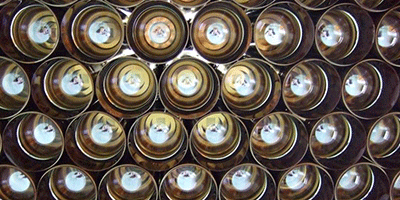Heavy Quark Model Lands on Solid Footing
To make sense of the gigabytes of data coming out of the Large Hadron Collider, physicists need good theoretical models of how quarks and gluons form the larger particles called hadrons. For hadrons containing a relatively massive b (or bottom) quark, an early approach—the free quark model—doesn’t work well, so researchers developed a “heavy quark expansion” model that recognizes interactions among the quarks. In a paper in Physical Review Letters, the LHCb Collaboration reports high-energy collision data that lend substantial support to the heavy quark expansion theory, which has become the best approach for some important calculations.
One test of this theory is to look at the lifetimes of two very different creatures: the hadron (comprising an up, down, and bottom quark) and the anti-B meson (comprising a down antiquark and a bottom quark). According to the heavy quark expansion, the lifetimes of the two particles should be dominated by the b quark and thus equal to within a few percent. However, data emerging from LHC’s predecessor, LEP, indicated that had a shorter lifespan than the B meson by a large margin.
Better data are now reported by the LHCb researchers, who studied and anti-B decays from tera-electron-volt proton-proton collisions. They find a ratio of lifetimes of , or equal within a few percent, as predicted by the heavy quark expansion. Moreover, the prediction was obtained without any corrections to the model, giving support to this treatment of quarks within hadrons. – David Voss





